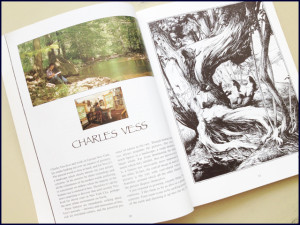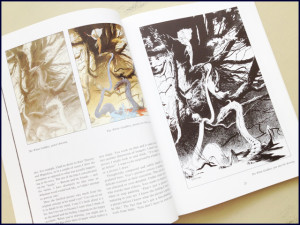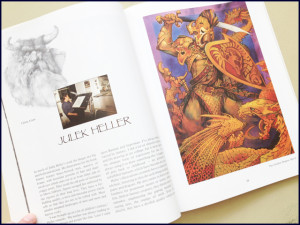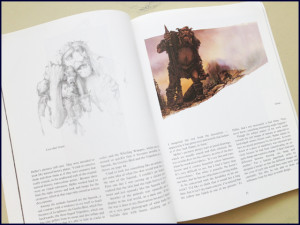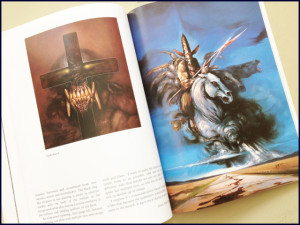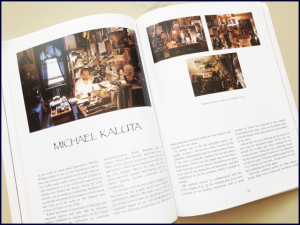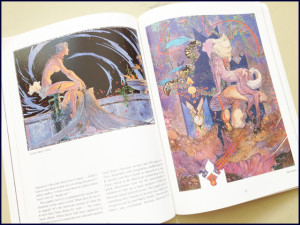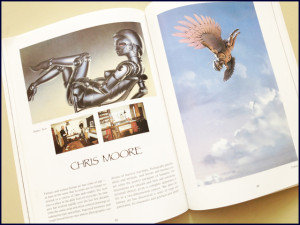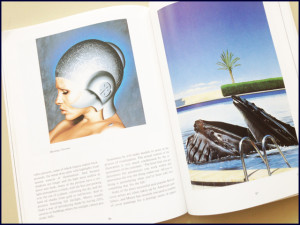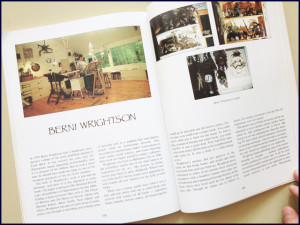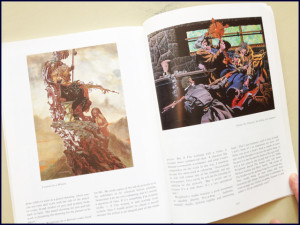Dream Makers, M. Dean w/ C. Evans
Paper Tiger, Surrey, 1988
127pp, full color illustrations throughout
A slim, but very nicely illustrated survey of six leading sci-fi/fantasy artist of the time: Charles Vess, Julek Heller, Melvyn Grant,
Michael Kaluta, Chris Moore, and Berni Wrightson.
Each artist is only afforded ~20 pages, including a brief bio and descriptions of their technique and inspiration. The artists, themselves, add their own voices to their experience and their creative process and that’s the real value of the book.
Charles Vess draws inspiration form the natural world and the painterly expressiveness of Art Nouveau movement, especially the late British illustrator Arthur Rackham. The rich, natural color palette conveys a sense of calm and natural authenticity to his work. Vess is well-known for his graphic novel collaborations with Neil Gaiman, including Stardust
Julek Heller delves deep in Arthurian mythology for inspiration. A well-weathered color palette and sturdy linework imbue strength and dramatic movement in his subjects. Younger readers will recognize his work from the illustrated version of the Chronicles Of Narnia from the 1990s. I’ll preview some of his earlier works in later entries.
Melvyn Grant’s art work is driven by his musicianship and many of you will recognize the Steel Czar from Judas Priest’s Rocka Rolla album. Muscular, metallic, and often menacing, Grant’s work is memorable on all those qualities.
His more recent material is much lighter, but still very well-executed and precise.
Below, is one of my favorite Grant pieces, and, probably, his best known: The Steel Tsar. Originally seen as the cover art to the Michael Moorcock alt-history novel of the same title, it also provided American re-issue of Judas Priest first album, Rocka Rolla.
Awesome then, awesome now…
Michael Kaluta shows some stylistic similarities between his colleagues Berni Wrightson and Charles Vess, but with a little more modern edge and more mature themes. He’s known for his numerous Magic: The Gathering card illustrations and, less so, but no less interesting, for the pulp-era cartoon illustrations from the Alan Parson Project “Don’t Answer Me” music video from 1983.
Chris Moore’s clean, streamlined forms are showcased, alongside some of his more terrestrial book cover contributions. The small baleen whale breaching the infinity pool offers a serene, if implausible scene. Moore has mastered the airbrush to create metallic sheen with convincing effect.
While Berni Wrightson is best known as a co-creator of Swamp Thing, much of his section is devoted to his illustrated Frankenstein.
Tense, sinewy ink lines bring movement and urgency to the illustrated scenes while the sweeping perspectives convey on the dread.
While his web site hasn’t been updated in some time, he seems to be active on Facebook.

